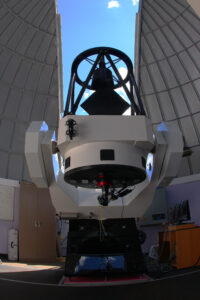About
Joseph D Schulman, M.D. is a prominent American biomedical scientist and physician, an amateur astrophotographer, and President of the Schulman Foundation. Below he describes his astrophotography journey.
Since my youth I always had an interest in astronomy. When I moved to Palm Springs in 2001 I acquired a small telescope and discovered that using it with a basic CCD camera (gifted to me by my daughter, Erica) allowed me to see far more than using the telescope with direct vision. This was truly exciting, and I developed a serious interest in astrophotography with CCD cameras which was a relatively new technology at that time.
I acquired larger telescopes and higher quality cameras which allowed me to start taking high-resolution CCD astrophotos. Thereafter I was fortunate to develop personal relationships with some professional astronomers at the University of Arizona in Tuscon, AZ. That university has an outstanding astronomy department and an observatory located atop Mt. Lemmon offering superb seeing conditions.
Over several years, a 32-inch telescope with exceptional astrophotography capabilities was manufactured and placed in an observatory dome on Mt. Lemmon with funds from the Schulman Foundation and resources from the University of Arizona. This telescope is used by the university for astronomy teaching, astrophotography, and research.
Most of the images on this website were made using this telescope. The original filtered gray-scale masters from the telescope’s CCD cameras were computer processed by me to produce the final colored images. To share them with others, I created a website on the SmugMug platform at AstrophotographyOnline.com
SmugMug is a great place to “Protect, Share, Store, and Sell Your Photos” but I then found out that their platform is not set up for search engines to discover and index images and their profile pages. My astrophotos were not being indexed by Google and other search engines for people to be able to find them online.
This website was built to remedy that situation. It is not a replacement to my other website but an extension of it. The images originally uploaded by me to SmugMug are duplicated on this search-friendly website so that more people can find them.
On both websites, you’ll find selected astroimages from 2004 through 2019 including galaxies, light and dark nebulas, planetary nebulas, globular star clusters, open clusters, and various other deep-sky objects. Use the navigation menu above to browse various categories of these items.
On each individual image page on this website, there is a link titled Click for larger view and more details which takes you to the corresponding page on my SmugMug website for that particular image.
Images are presented in approximate chronological order with some exceptions.
All images may be downloaded at no cost for non-commercial purposes.
If you wish to purchase printed images or other items you can conveniently acquire them on my SmugMug website. Just click the “more details” link in the description on each individual image page on this website to get to the corresponding page on my SmugMug website.
Image Capture and Image Processing
Earliest data were captured with a SBIG ST8-XE or STL-11000M research grade CCD camera and Takahashi FSQ 106 astrograph refractor or Optical Guidance Systems Ritchey-Chretien 12.5-inch telescope operating in Palm Springs, California.
Beginning in April 2008, some images were obtained on a 24-inch R-C telescope with 11000M camera atop Mt. Lemmon near Tucson, Arizona.
In October 2010, this was replaced by the 32-inch Schulman Foundation R-C telescope (generally known as the “Schulman telescope”) maintained on Mt. Lemmon by the University of Arizona. The 11000M camera initially used on the 32-inch scope was replaced by an STX-16803 in early 2011.
In 2019, the Schulman telescope became available for online astroimaging by amateurs and professionals under the management of the University of Arizona SkyCenter.
Image capture and processing for the images displayed here utilized specialized software including TheSky6 Professional Edition, ACP Planner and Capture, CCDStack, Adobe Photoshop, Noise Ninja, MaximDL, RegiStar, PixInsight, FITS Liberator, Filezilla, and CCDSharp.
Total exposure times for each image were typically 3 – 6 hours and in some cases over 20 hours.
Luminance frames were generally processed separately from RGB color composites which were then united in Photoshop.
H-alpha blending used various techniques.

